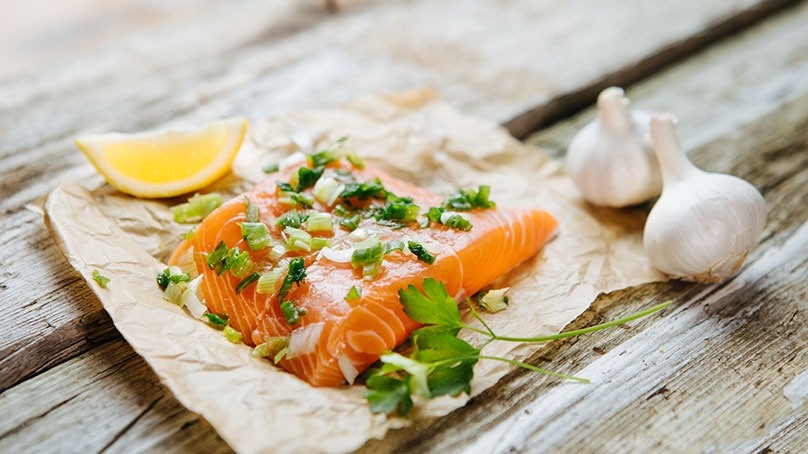Rubbery No More: 15 Tips for Cooking Seafood
November 09, 2017 | Food Lion


Love clams, but have a hard time chewing through them when you cook them? Enjoy catfish, but can't figure out why your version is heavy and greasy when the catfish at restaurants offers a light crunch? You're not alone, and your problems are easy to fix!
Seafood is one of the most difficult proteins to cook because it's so unforgiving. If cooked too long, it gets tough and chewy fast. Even if sautéed properly, you may not yield the right texture due to it having been frozen and/or pumped with water in processing. Always look to see if the item you're buying has been previously frozen or injected with water. If so, it's likely to leech water out as it cooks. That means what you expect to be a crisp saute will instead probably be watery, without you realizing it until too late! In those cases, choose cooking methods that prevent water leakage, such as coating the seafood before cooking.
Whatever your seafood sadness, we can solve it with the below cooking tips!
1. Mussels and clams are ready as soon as their shells are open wide. Have a big bowl next to your cooking pot or pan, and remove them with tongs as they finish so they don't overcook. Mussels take three to five minutes on average to cook, where clams take five to 10.
2. Corn starch makes a great coating for scallops or shrimp before sauteing. If water leeching out is likely (see above), this is the perfect solution. Just be sure to season the starch with some salt and pepper before dunking the fish or crustacean into it.
3. For frying, proper oil temperature matters most to getting a crisp result. Heat oil to just shy of 375 degrees before adding seafood.
4. Don't crowd the fryer: just like frying any other food, it's important to go slow when frying seafood. Adding too many pieces at once will bring down oil temp too low, yielding a greasy result.
5. For tender and moist fish that flakes apart easily, parchment baking is a great choice. Place fish, sauce, and vegetables in parchment paper, wrap well, and bake at 350 degrees. Thin fillets will cook in 15 to 20 minutes, while thicker portions will need up to 30 minutes.
6. Always discard any shellfish that doesn't open during cooking, or that was already open while still refrigerated. This will minimize your chance of eating something that has gone bad.
7. Whole fish is popular in many ethnic cuisines, and is worth trying! The benefits are similar to cooking meat on the bone, in that the flesh you eat retains more flavor.
8. Scallops are naturally mild in flavor, and can hold up well to strong additions. Try bold flavors like orange zest, soy sauce, or a Cajun spice mix when cooking them. Small scallops need about a minute per side in a pan over medium high heat, and large need about two.
9. Pat everything dry. No matter what the seafood item, wiping it dry will help it get crispier.
10. For grilling, a wooden plank ensures you won't lose any fish to the grill itself—and it adds delicious flavor. Soak cedar or other woods for about a half hour before use. This is ideal for thin fillets, which are known for sticking to the grill.
11. Similar to meat, thick cuts of fish will cook more evenly if allowed to rest outside of the fridge before cooking. You don't want to enter a danger zone of fish potentially going bad, so 20 to 30 minutes on the counter before cooking is a safe bet.
12. A light batter is aided by carbonation; that's why beer battering is so common for fish and chips. If you don't enjoy the taste of beer, choose carbonated water for the batter's liquid. Self-rising flour, which contains rising agents like baking soda, will create a fluffier batter than standard white baking flour.
13. To get breading to stick to seafood, use the time-tested method that works for chicken and other breaded items: first dredge seafood in flour, then in egg (thinned slightly with milk if desired), then in breadcrumbs. Breadcrumbs alone aren't as likely to stick.
14. If the smell of seafood is off-putting to you or you're worried that the aroma of it cooking will linger in your home, marinating it in milk first will keep it more mild. You can do this in the refrigerator, and an hour of a milk marinade will lessen the "fishy" smell. Be sure to dry it thoroughly before cooking!
15. Boiled shrimp need only a minute—literally. When adding them to boiling water, they'll be good to go within 90 seconds or so.






Create Your Display Name